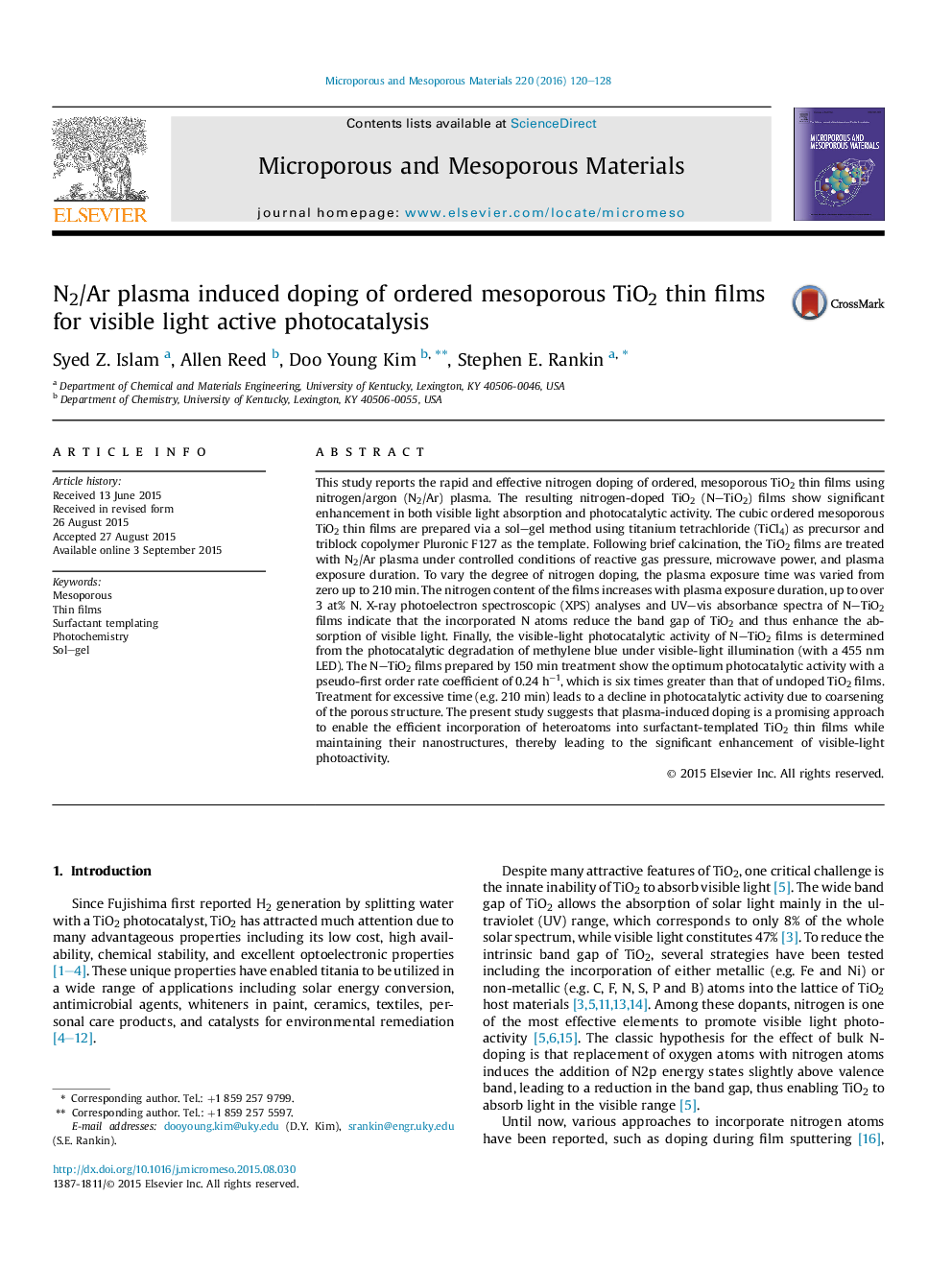| Article ID | Journal | Published Year | Pages | File Type |
|---|---|---|---|---|
| 72241 | Microporous and Mesoporous Materials | 2016 | 9 Pages |
•Photocatalysis by surfactant-templated ordered mesoporous TiO2 films investigated.•N2/Ar plasma processing reaches doping levels of 2–3+% on timescale of hours.•Band gap reduction and visible light absorption increase with nitrogen doping.•Visible-light methylene blue degradation enhanced up to 6x over undoped titania.•Optimal time of plasma exposure found due to pore texture coarsening.
This study reports the rapid and effective nitrogen doping of ordered, mesoporous TiO2 thin films using nitrogen/argon (N2/Ar) plasma. The resulting nitrogen-doped TiO2 (N–TiO2) films show significant enhancement in both visible light absorption and photocatalytic activity. The cubic ordered mesoporous TiO2 thin films are prepared via a sol–gel method using titanium tetrachloride (TiCl4) as precursor and triblock copolymer Pluronic F127 as the template. Following brief calcination, the TiO2 films are treated with N2/Ar plasma under controlled conditions of reactive gas pressure, microwave power, and plasma exposure duration. To vary the degree of nitrogen doping, the plasma exposure time was varied from zero up to 210 min. The nitrogen content of the films increases with plasma exposure duration, up to over 3 at% N. X-ray photoelectron spectroscopic (XPS) analyses and UV–vis absorbance spectra of N–TiO2 films indicate that the incorporated N atoms reduce the band gap of TiO2 and thus enhance the absorption of visible light. Finally, the visible-light photocatalytic activity of N–TiO2 films is determined from the photocatalytic degradation of methylene blue under visible-light illumination (with a 455 nm LED). The N–TiO2 films prepared by 150 min treatment show the optimum photocatalytic activity with a pseudo-first order rate coefficient of 0.24 h−1, which is six times greater than that of undoped TiO2 films. Treatment for excessive time (e.g. 210 min) leads to a decline in photocatalytic activity due to coarsening of the porous structure. The present study suggests that plasma-induced doping is a promising approach to enable the efficient incorporation of heteroatoms into surfactant-templated TiO2 thin films while maintaining their nanostructures, thereby leading to the significant enhancement of visible-light photoactivity.
Graphical abstractFigure optionsDownload full-size imageDownload as PowerPoint slide
